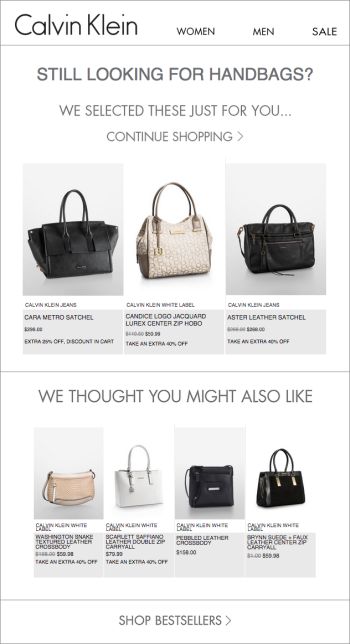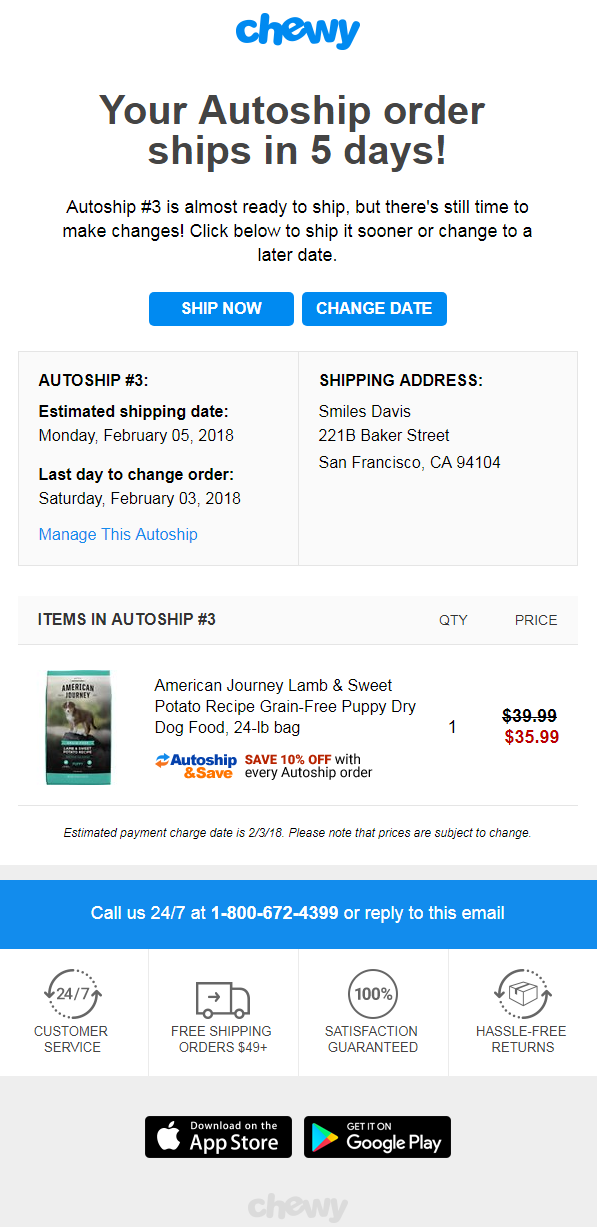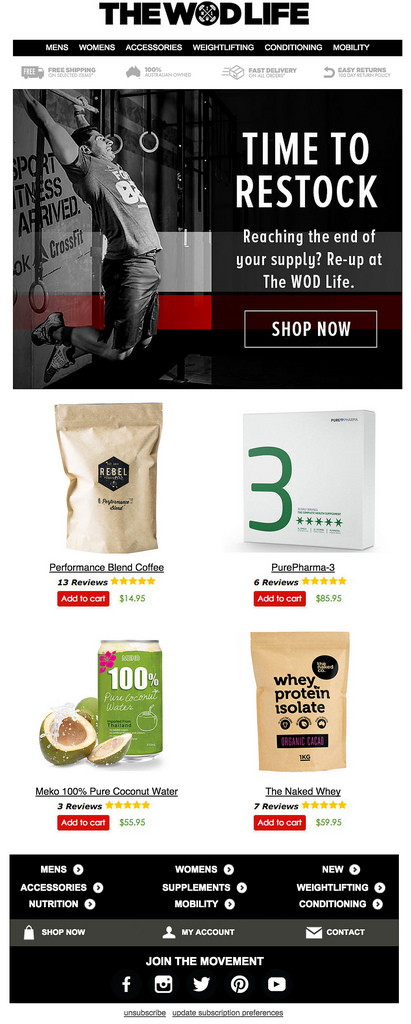
Hey [Your Name Here],
When was the last time you received an email starting like this?
Probably, you get a couple of emails that use your first name and contain offers that are not very relevant to you. Using the first name to address the subscriber is the only personalization some businesses still use. Well, it is the easiest way to personalize emails, but you need to use it in a way that the content is relevant to the subscriber.
For your email campaign to be successful, you need to have an appropriate and streamlined email personalization strategy in place. The emails you send should speak directly to your subscribers and cater to their requirements and interests in some way or the other. This can be done by creating relevant, tailor-made emails for each individual subscriber.
Wonder how? By using Dynamic Content! Let’s dig deeper…
Dynamic content lets you create tailor-made content by dynamically changing the text and images of your emails in real-time for each subscriber. It increases the effectiveness of your campaign by providing relevant information to your subscribers.
Importance of dynamic content in email personalization
Dynamic content allows marketers to send personalized emails that changes the copy and images based on the data collected from the subscribers. Using dynamic content in emails, marketers can create engaging and fully personalized, real-time emails that deliver the right message, to the right user, at the right time.
By having all the data and knowing the lifecycle stage of the subscribers, you will be able to send highly relevant and personalized emails that cater to the individual needs of each subscriber. This improves the open rates and CTRs of your emails and improves your brand identity. According to GetResponse, personalizing the content of your email lifts up open-rates by 29.95% and click-through rates by 5.03%.
Steps to create an effective dynamic email campaign

Once you have made up your mind to add personalization to your emails with dynamic content, here are a few steps you need to follow to set up an effective campaign.
Plan what content will be dynamic
The first and foremost thing that you need to do is decide what areas of your email will contain dynamically changing content. Evaluate your past emails and determine the areas that you can modify with dynamic content. If you are a fashion brand, you can make your images dynamic, and if you are sending emails for your fitness app, you need to dynamically change the text and offers according to the subscribers’ information. Build a strategy around what might work well for your brand.
Collect appropriate data
When you have a plan for your email strategy, start gathering data from your subscribers. You might have to dig deeper into your subscribers’ interests and past purchase information to collect all necessary data. Ask for certain information such as location, gender, demographics, areas of interest, etc. through sign-up forms or welcome emails. Monitor the subscribers’ online browsing behavior and purchase behavior to get more data.
Segment the lists
To make sending your email easy, you need to segment your lists appropriately. Create segments on the basis of the categories you are planning to address your subscribers, such as gender, location, preferences, purchase history, etc. You need to keep your data and segments up to date by asking your subscribers to update information and preferences time and again.
Create tailor-made content
After collecting all necessary data and segmenting them, you can now start creating your content. Follow your marketing strategy and use the right ESPs to add dynamic content to your emails. You can display different images, modify subject lines, make changes in the email copy, switch offers and CTA, based on the customer data. Some of the tools and ESPs that let you do this effectively are HubSpot, MailChimp, NiftyImages, Boomtrain, ConstantContact, etc.
Measure success
Launch your dynamic email campaign and measure its performance to know if it works and draws desired results. Monitor the change in open rates and CTRs of your emails with dynamic content and evaluate the progress of your email marketing strategy. Make necessary tweaks in the strategy and content to make the most of your campaign.
Email campaigns that can benefit from dynamic content
With proper data collection and segmentation, half of the work of email marketers is done. The data collected, and its segmentation are used to create dynamic emails that are most relevant to each individual. While the most effective way of using dynamic content in emails is by providing apt product recommendations, email marketers can implement it in other emails as well to improve relevancy.
Here are a few emails that can draw better results with the use of dynamic content.
Dynamic offers
Your subscribers have varied interests and choices. To get them engaged with your brand’s offerings, you need to send them the right offers. For example, for someone who is not related to sports, there is no point in sending them offers on sports gears and accessories. Instead, send them discounts on something that is of interest to them or something related to their past purchase. Dynamic offer emails let you send separate and unique offers for both men and women, based on their categories and areas of interests.
Check out this email example from Adidas that uses different images, tagline, and offers for both men and women.

Product recommendations
Sending your subscribers suitable product recommendations is one of the most effective ways to engage them with your brand’s emails. Recommendation engines let you add sections like “People who bought this also bought…” with relevant product recommendations in your emails. Your emails can contain specific product recommendations in the form of:
- Most popular products: products that are widely viewed,
- Most-selling products: products that others are purchasing,
- New products: new and upcoming products, and
- Products they may like: products based on their browsing/purchase history.
Have a look at this email from Calvin Klein. It suggests the subscriber handbags based on their browsing history. It also has a “You Might Also Like” section which shows the most popular products related to their search.

Cart abandonment emails
Cart abandonment emails have great scope for improving your business conversions. You can include a “You May Also Like” section or upsell or cross-sell related products in the cart abandonment emails. For example, if someone has left a dress in their shopping bag, then show them matching footwear or accessories for the dress in the cart abandonment email. The related items can be added based on their purchase and browse history.
Here’s an example of a cart abandonment email from MCM that cross-sells products through the section “You May Also Enjoy”.

Reminder/Order follow-up emails
To keep your customers engaged with your brand, you need to send timely emails and keep them updated. Send follow-up emails based on their past purchases to remind them to restock. Monitor the lifecycle of your subscribers and send dynamic email to loyal and repeat customers according to their purchases. For example, you can send reminders to restock certain products that someone frequently buys from you at regular intervals. This is a great way to improve sales as it will refrain your customers from buying it from your competitors.
Take a look at this restock reminder email from Chewy. It automatically re-orders and auto-ships dog food for a regular customer and asks them for the confirmation.

Replenishment emails
Similar to reminder emails, you can send replenishment emails asking your subscribers/customers to replenish products that they bought from you in the past. You can include the same products or even upsell other relevant products that are an upgraded version of the one purchased by them. You can also give recommendations for related products to increase the scope of sales.
Check out this email from The WodLife. The headline “Time to Restock” with product images and their price gives the customers a chance to replenish the products.

Wrap up
What is your strategy for email personalization? Try leveraging dynamic content in your email marketing campaigns and see the change in engagement and conversions. If you are not using dynamic content yet, now is the right time to start!
If you want to get 30 effective techniques to master content marketing along with valuable insights from 10+ influencers like Mark Schaefer, Rebecca Lieb, Lee Odden, Jason Miller or Ian Cleary, download our free eBook now!



Great Read, Keep doing the good work
Hi Kevin,
Thanks for Sharing, I hope it will help me.
very nice article
thanks your post helped me to understand more about How to use dynamic content for email personalization.
Nice Article Thank You for sharing This Article
Nice Article Thank You for sharing this amazing Article
Hi,
I am loving your way of starting article from the point. I will try to use this technique in my blogs. By they way thanks for the creative information.
Cheers!